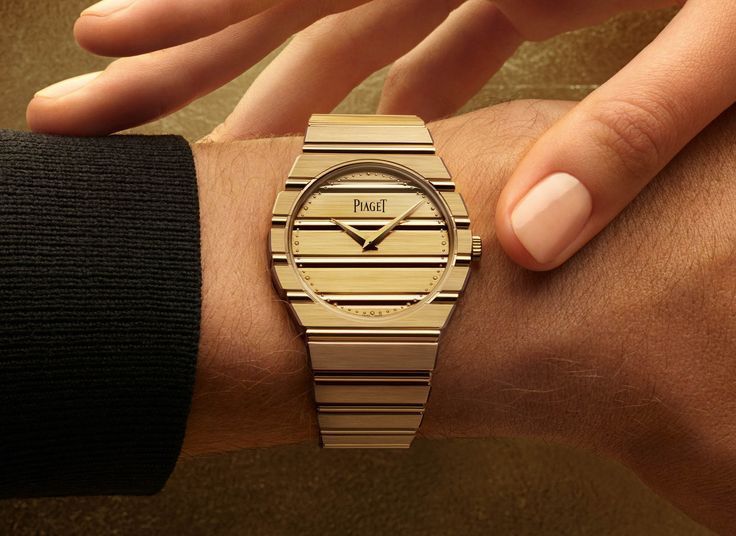OUTLAWS AND THEIR BOULLION
Live Beautifully
A look into the American love affair with outlaws and their accouterments
The Piaget Polo

In 1979, Yves Piaget captured the absurdity and opulence of the disco era in a wristwatch so heavy and bright that its appeal might best be described as primal, and they called it THE POLO. Offered in a catalog of round and square models, each with options for both men and women, the Polo was the world’s most unapologetic attempt to juxtapose an almost industrial quantity of precious metal with elegant proportions. And flamboyant characters from all of the world’s great cities and beaches embraced its decadence, and not just the well-educated and traveled, but the nouveau riche and eager to impress. The Polo was flocked to by those with the most to prove, those with opposition to subtlety, and its explosion in culture quickly followed. Still, in time, the popularity of the Polo would wane. The ever-swinging pendulum ushered in a dark age of “smart casual” luxury in the form of steel sports watches that would last decades. But, to the surprise of plenty, these bricks of gold bullion are back. The model has been rereleased in 2024 by its manufacturer for a hard $75,000, and that has sent its vintage market ablaze. It’s yet again cool to be decisively rich, almost comically off-putting. The viral “mob wife” aesthetic that followed HBO’s celebration of The Sopranos' 25th anniversary and left women everywhere mink and diamond-clad, is another stylistic outgrowth of the cultural movement. And if we track the resurgence of the genre, we’ll find that our undying fascination with the Polo in great deal rests in our star-gazed love for those that wore them most famously, and what they represented. And maybe no archetype during its reign in America became as synonymous with the model as the ‘gangster.’ Heck, just this year we see Sly Stallone sporting a Polo in his new Mob series, Tulsa King. Perfect.
The film and media industries’ obsession from time immemorial with telling the stories of gunslingers has left a spell over the American public, a national taboo love affair with the ‘bad guy’, from the Wild West to the East Village. If left to a popular vote, our Mt. Rushmore could’ve just as easily been home to the finely chiseled busts of Jesse James, Butch Cassidy, Al Capone, and Tupac. Not a year after being fingered for the public execution of another gangland leader in front of droves of citizens in midtown Manhattan just before Christmas, John Gotti was immortalized by Andy Warhol on the cover of Time magazine. For the last 15 years, AMC and Showtime have pitted a methamphetamine cook against a serial killer for the title of “Best Fictional American Darling.”
But our affinity for outlaws, while maybe not something we ought to be proud of, does speak to a sensible truth. In their own, often unsavory ways, outlaws inspire us. Fearless of repercussions, they stick it to the taxman and live uninhibited liberty. Bad guys from all walks of life live out a subconscious desire that lives in so many, the law-abiding and mild-mannered not excluded, to be free, to be bold and brazen, to be subservient to none. And, in a world that has a nasty way of beating us down with bills and laws and corporate bureaucracy, our misplaced idolatry might be forgivable.
In our effort to appropriate rebel culture without ourselves becoming enemies of the state, we’ve weaved certain totems into our civilian daydream: beaten biker jackets a la Joey Ramone, Timberland boots like DMX, and, my favorite, the Piaget Polo.
In film and television, crime stories are just as romanticized. In fact, the genre itself has given us some of history’s greatest pieces of cinema. Director Martin Scorsese is among the brilliant minds that have explored the psyche of the desperado. From Mean Streets and Goodfellas to Casino and The Irishman, Scorsese’s dedication to telling the stories of bandits from Italian, Irish, and Jewish backgrounds taking pieces of the world for themselves, before giving it all back in predictably bloody baths, has spanned 50 years. And his hyper-accurate costume design is renowned, from sharp lapels and exotic and colorful neckties to camel coats and thin gold watches, none more recognizable or desirable than Piaget’s Polo.
These cautionary tales are woven into the fabric of Americana, and their accouterments will forever have a magnetism within our fifty great states. So, in that, Piaget, like the voice of John Wayne, the taste of clam chowder, and the vibration of playoff baseball, is a part of us... an unabashedly garish fabric in our national patchwork.
Christian Zeron owns LMFNYC, a multi-faceted marketing firm and Theo & Harris, an online vintage watch site. A prolific writer on Americana, Fashion and Style. He is part Italian.

